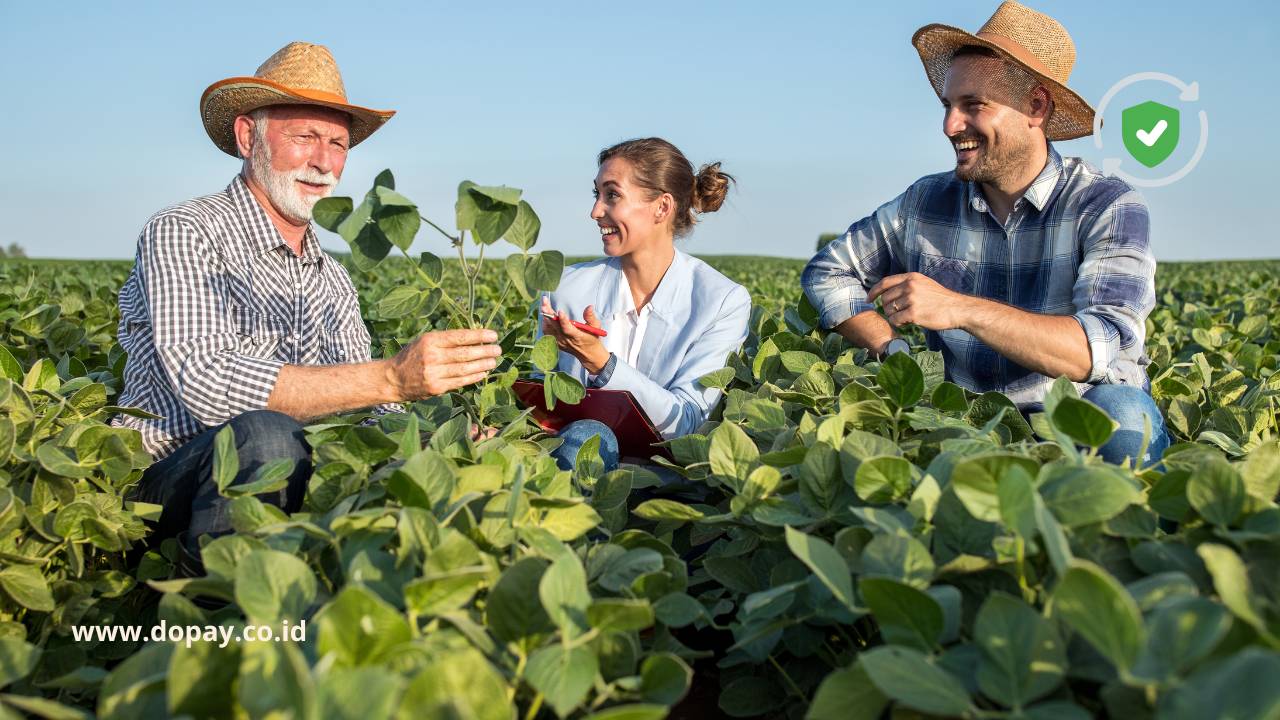A Complete Guide to Average Premiums and Coverage
Farmer insurance is a critical part of managing any agricultural operation in the United States. Whether you’re running a small family farm or a large commercial enterprise, protecting your assets, crops, livestock, and equipment is essential. Without the right coverage, you could face devastating financial losses due to accidents, natural disasters, or other unforeseen events.
1. What is Farmer Insurance?
Farmer insurance is a type of coverage specifically designed to protect agricultural businesses and farmers from financial losses due to various risks associated with farming. These risks can include:
- Damage to crops and livestock
- Loss or damage of farming equipment
- Accidents involving employees or visitors on the farm
- Liability for injuries caused by the farm’s operations
- Natural disasters such as floods, storms, or droughts
Farmer insurance policies are tailored to the unique needs of each farm, covering a wide range of potential risks to ensure that the business is adequately protected.
2. Types of Farmer Insurance Policies
There are several types of insurance coverage that farmers can purchase, each offering protection for different aspects of their operation. Here are some of the most common types of farmer insurance in the United States:
2.1 Property Insurance
This coverage protects your farm’s buildings, equipment, and other property against damage or loss due to fire, theft, or natural disasters like tornadoes and floods. Property insurance is one of the most basic forms of farmer insurance and is essential for every farm.
2.2 Crop Insurance
Crop insurance protects farmers against the loss of their crops due to adverse weather conditions, pests, or diseases. In the U.S., crop insurance is often subsidized by the federal government to make it more affordable for farmers.
There are two main types of crop insurance:
- Yield-based insurance: This covers losses when your yield falls below the insured amount.
- Revenue-based insurance: This protects you when your farm’s revenue drops below a certain level, whether due to yield losses or lower market prices.
2.3 Livestock Insurance
Livestock insurance provides coverage in the event that your animals are injured, killed, or lost due to accidents, diseases, or theft. Some policies may also cover losses from natural disasters.
2.4 Liability Insurance
Farmers often face various liability risks, including injuries to farm workers, accidents involving visitors, or environmental damage caused by farming activities. Liability insurance can help cover legal costs and compensation if someone files a lawsuit against your farm.
2.5 Equipment Insurance
Farm equipment, such as tractors, harvesters, and irrigation systems, represents a significant investment. Equipment insurance ensures that you’re covered if any of your machinery is damaged, stolen, or needs repairs due to an accident.
3. Average Cost of Farmer Insurance Premiums
The average cost of farmer insurance premiums in the United States can vary greatly depending on several factors. However, most farmers can expect to pay anywhere from $2,000 to $10,000 per year for a comprehensive insurance policy. Below, we’ll break down the average costs for different types of coverage:
Type of Insurance Average Annual Premium Property Insurance $1,500 – $3,500 Crop Insurance $1,000 – $3,000 Livestock Insurance $500 – $1,500 Liability Insurance $500 – $2,000 Equipment Insurance $500 – $2,500
These averages are only estimates, and actual premiums will depend on the specific details of your farm and insurance needs.
4. Key Factors That Affect Farmer Insurance Premiums
Several factors can influence how much you pay for farmer insurance in the United States. Insurance companies assess the level of risk involved with insuring your farm, which is why premiums can vary from one farmer to the next.
Here are the primary factors that impact your insurance premiums:
4.1 Location
The location of your farm plays a significant role in determining your premium. Farms located in areas prone to natural disasters, such as floods, wildfires, or hurricanes, are generally considered higher risk, leading to higher premiums.
4.2 Farm Size
The size of your farm also affects your insurance costs. Larger farms with more assets to protect, such as additional buildings or equipment, typically require higher coverage limits, which increases the cost of insurance.
4.3 Type of Crops or Livestock
Certain types of crops and livestock may be considered higher risk by insurers. For example, livestock such as cattle or pigs may carry higher premiums than crops like corn or wheat due to the potential for disease outbreaks or accidents.
4.4 Value of Equipment
Expensive farm equipment, such as high-end tractors or irrigation systems, will increase your premiums. Insuring costly machinery typically results in higher coverage needs, leading to a more expensive policy.
4.5 Claims History
If you’ve filed claims in the past, insurance companies may see you as a higher risk, which can increase your premium. Maintaining a clean claims history can help you secure lower insurance rates.
4.6 Coverage Limits
The more coverage you require, the higher your premiums will be. Some farmers opt for higher coverage limits to ensure that they are fully protected, but this will naturally result in higher insurance costs.
5. How to Choose the Right Farmer Insurance Policy
Choosing the best farmer insurance policy for your farm can seem overwhelming, but following a few key steps can simplify the process and ensure you get the right coverage.
5.1 Assess Your Farm’s Needs
Start by evaluating the specific risks your farm faces. Consider the value of your property, equipment, crops, and livestock, and think about the likelihood of natural disasters or accidents.
5.2 Compare Multiple Insurance Providers
Don’t settle for the first insurance policy you come across. Shop around and compare quotes from multiple insurance providers. This will give you a better idea of the average costs and help you find the most competitive rate.
5.3 Understand Your Policy
Make sure you fully understand the terms and conditions of any insurance policy you’re considering. Ask questions if anything is unclear and make sure you know what is and isn’t covered under the policy.
5.4 Work with an Experienced Insurance Agent
Consider working with an insurance agent who specializes in farm insurance. They can guide you through the process, help you understand your options, and ensure that you select the right coverage for your farm.
6. Frequently Asked Questions (FAQs)
Q: How much does farmer insurance cost in the United States?
A: The cost of farmer insurance varies depending on factors like location, farm size, and the types of coverage you need. On average, premiums range from $2,000 to $10,000 per year, but this can be higher or lower depending on your specific circumstances.
Q: Do I need crop insurance for my farm?
A: Crop insurance is highly recommended for any farm that relies on crops as a primary source of income. It helps protect against losses due to adverse weather, pests, or disease, ensuring that you can recover financially if your crops are damaged.
Q: What is the difference between property insurance and liability insurance for farmers?
A: Property insurance covers the physical assets on your farm, such as buildings, equipment, and livestock. Liability insurance, on the other hand, protects you in case someone files a lawsuit against your farm due to injuries or damage caused by your farming operations.
Q: Can I bundle different types of farmer insurance into one policy?
A: Yes, many insurance companies offer bundled insurance policies that combine several types of coverage, such as property, crop, and liability insurance. Bundling can simplify the process and may even save you money on premiums.
Q: How can I reduce my farmer insurance premiums?
A: To reduce your premiums, consider taking steps to minimize risk on your farm. This could include installing security systems, improving farm safety protocols, and maintaining a clean claims history. Additionally, shopping around and comparing insurance providers can help you find more affordable coverage.
Q: Does farmer insurance cover natural disasters?
A: Yes, most farmer insurance policies include coverage for natural disasters like floods, hurricanes, and wildfires. However, the extent of this coverage may vary depending on your policy, so it’s important to review the terms carefully.
Conclusion
Farmer insurance is a crucial investment for protecting your farm and its assets. From property and crop insurance to liability and equipment coverage, there are numerous policy options to choose from. By understanding the types of coverage available, the factors that affect premiums, and how to select the right insurance provider, you can ensure that your farm is fully protected from financial loss.
The average premiums for farmer insurance in the United States vary depending on your location, farm size, and coverage needs, but with the right approach, you can find a policy that offers the protection you need at a price you can afford. Take the time to assess your farm’s risks, compare quotes, and work with an experienced insurance agent to secure the best coverage possible.



